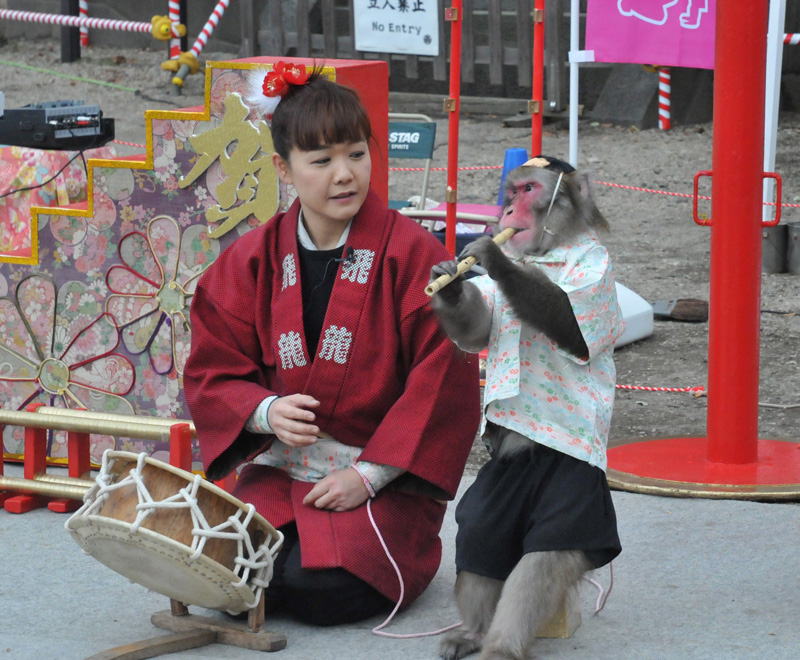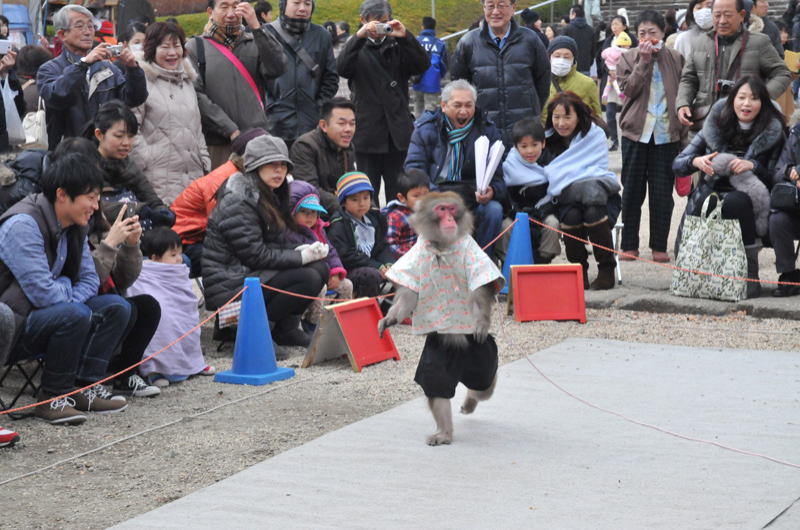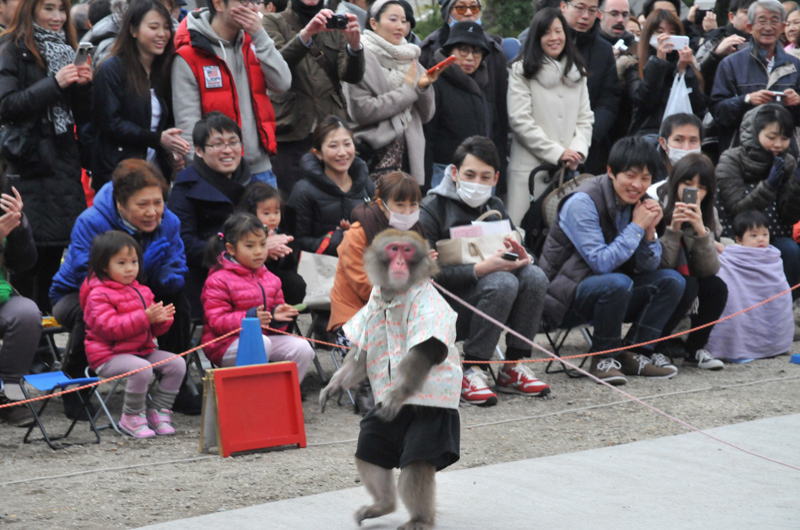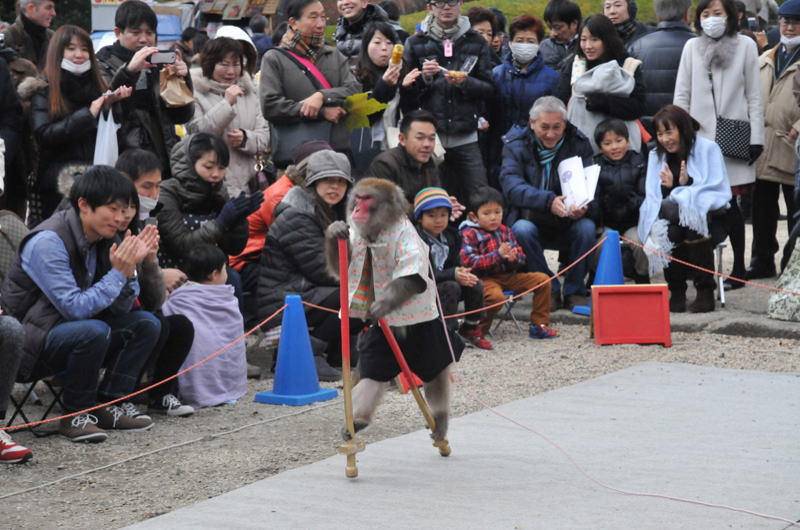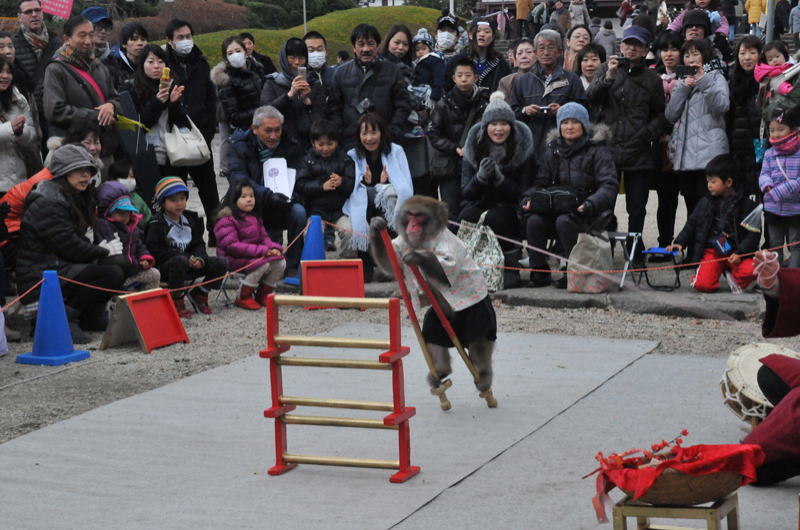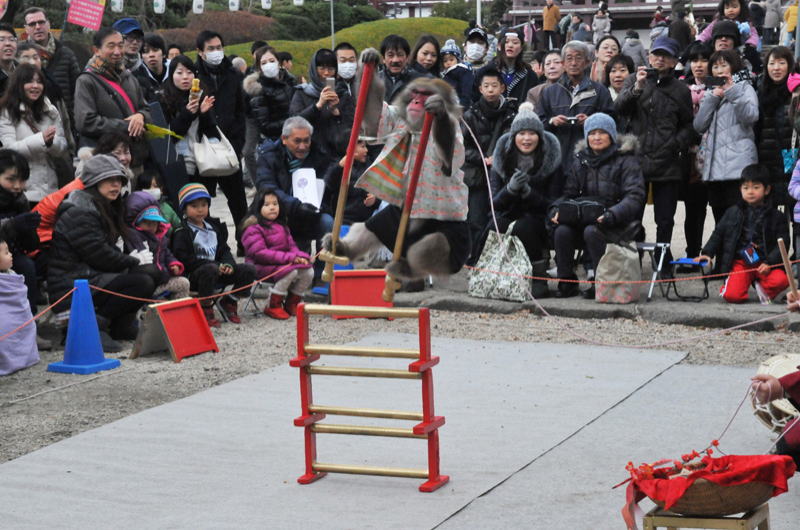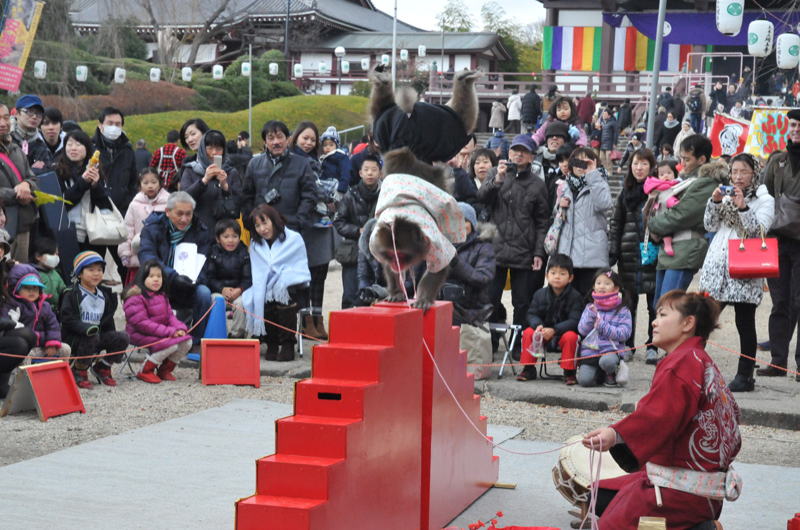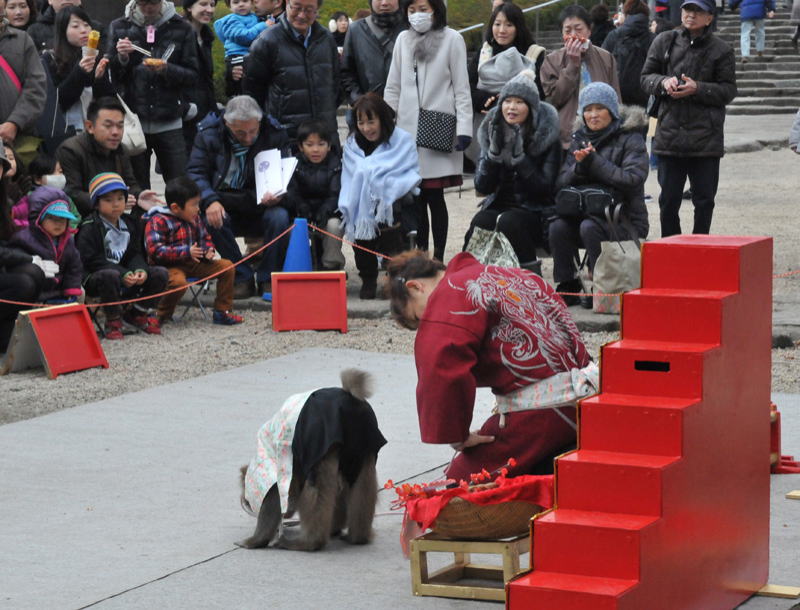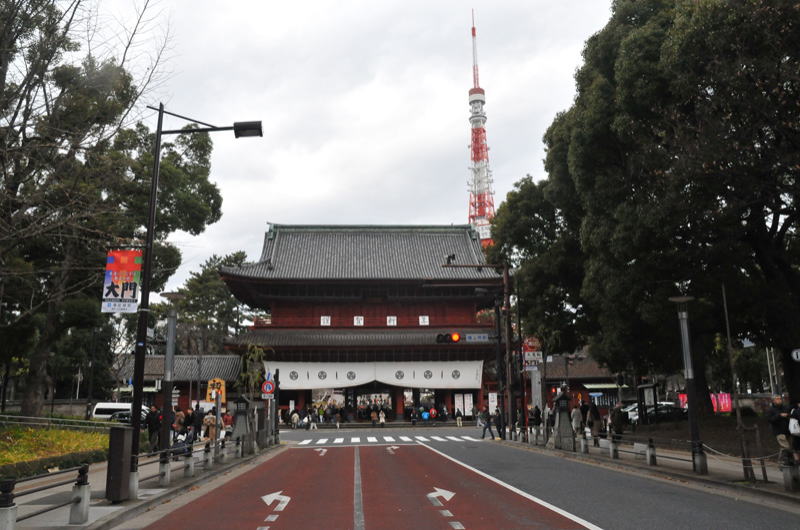
Zojoji temple is close to Hamamatsu-cho Station on JR Yamanote Line and is near Tokyo Tower
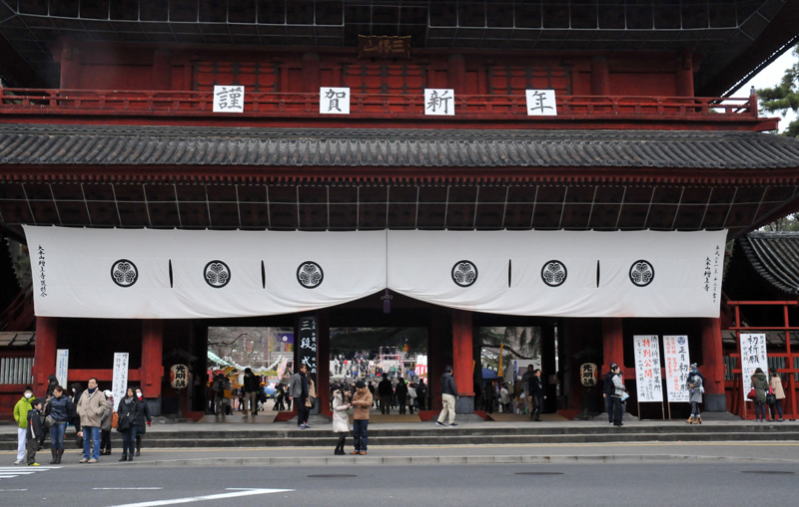
Sangedatsumon Main Gate
| Return to Top Return to January |
ZOJOJI TEMPLE
| Zojoji was founded n 1393 as an orthodox and fundamental nembutsu seminary
for Jodo sect buddhism in the Kanto region. Zojoji was relocated to the present site in 1598 after Ieyasu Tokugawa, founder of the Tokugawa Shogunate, entered Edo (present-day Tokyo) in 1590 to establish his provincial government. Zojoji became the family temple of the Tokugawa family and an unparalleled grand cathedral was built. Zojoji also served as an administrative center to govern the religious studies and activities of Jodo shu. In those days, its precincts covered an area of 826,000 square meters which also contained 48 smaller attached temples and about 150 grammar schools, as many as 3,000 priests and novices always resided here as students. However, as the Tokugawa shogunate came to an end and the Meiji Era started, an anti-Buddhist movement got under way leading to destructions of facilities of the temples throughout the country. Further, the cathedral, temples and the mausoleum of the Tokugawa family were burned down by air raids during World War II. Thus, Zojoji was profoundly affected by political and social circumstances. Today, its cathedral and other structures have been rebuilt, and Zojoji continues to serve as the main temple of Jodo sect and the central nembutsu seminary for priests and novices. Furthermore it has endeared itself to the general public as both a grand Buddhist temple typical of the metropolis Tokyo and a hub of religious and cultural activities. (from Zojoji website) URL: http://www.zojoji.or.jp/en/ |
NEW YEAR AT ZOJOJI TEMPLE

Zojoji temple is close to Hamamatsu-cho Station on JR Yamanote Line and
is near Tokyo Tower

Sangedatsumon Main Gate
| Sangedadatsumon means a gate (mon) for getting delivered from three earthly states of mind -greed, anger and stupidity. |
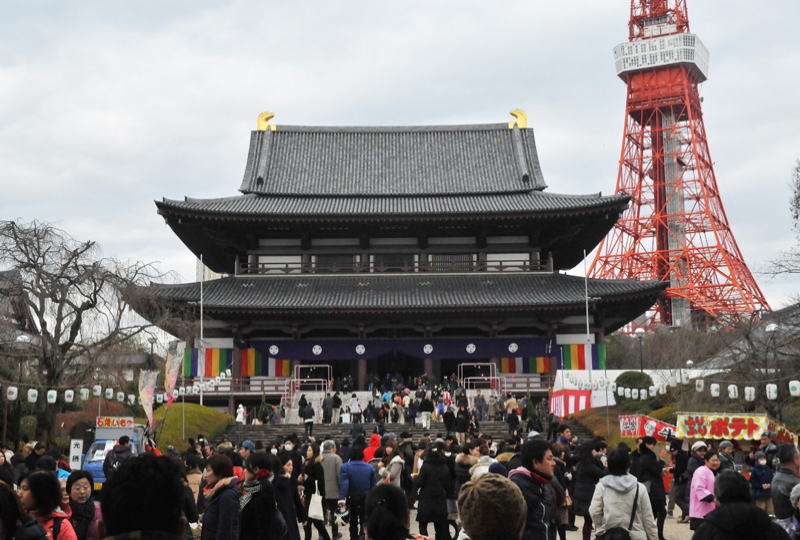
Main Hall of the temple
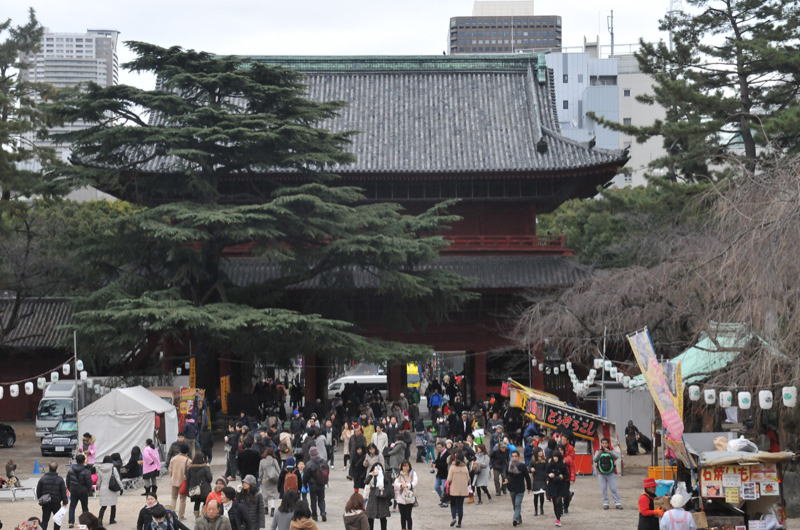
| Sangedatsumon viewed from the main hall. The Himalayan cedar tree on the left was planted by General Grant the eighteenth American president when he visited the temple in 1879. |
MAUSOLEUM OF TOKUGAWA SHOGUNS
| Six Tokugawa Shoguns, Imperial Princess Kazunomiya (wife of Shogun Iemochi),
and wives and children of shoguns are buried here while other six shoguns
are buried at Kan-Eiji Temple in Ueno. The mausoleum is open on Saturday
and Sunday and national holidays as well as from Jan. 1 through 14. Until the destruction of the Zojoji temple by air raids during the W.W. II, the tomb stones of shoguns were housed each in different shrines as they are shown in old photos. Today, the tomb stones are gathered at one place. |
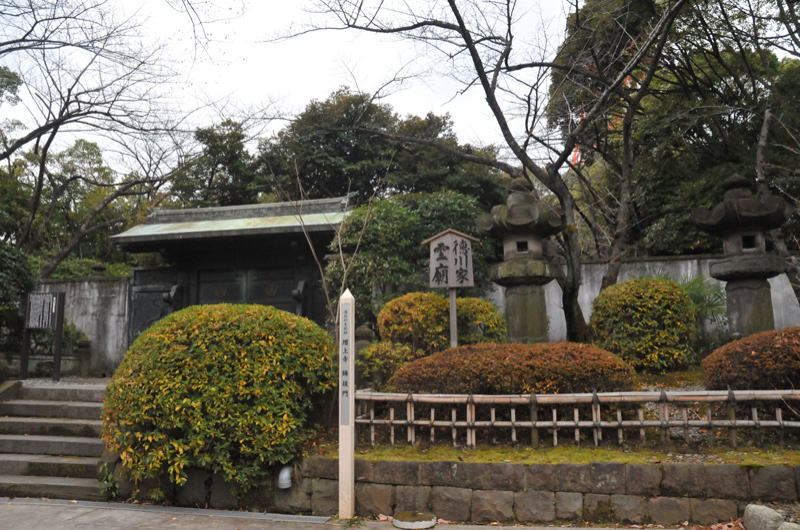
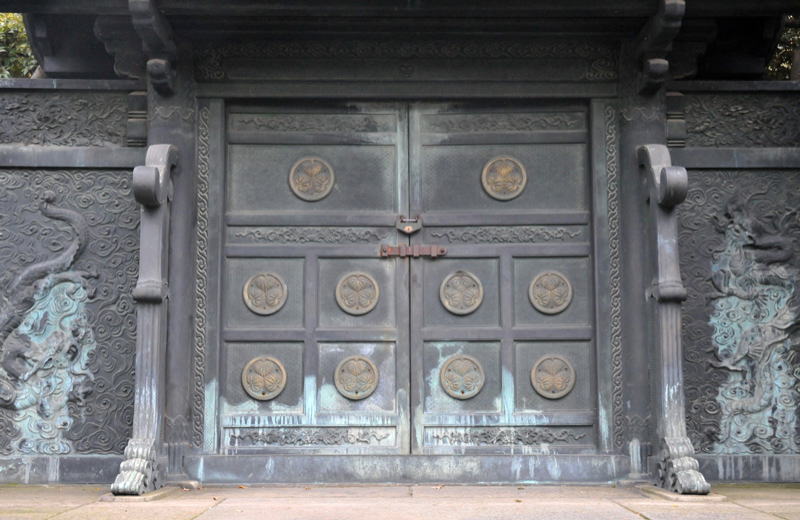
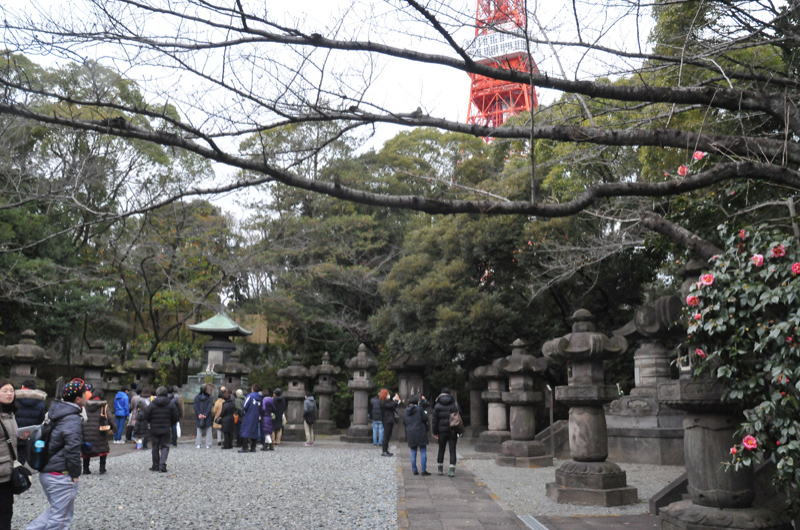
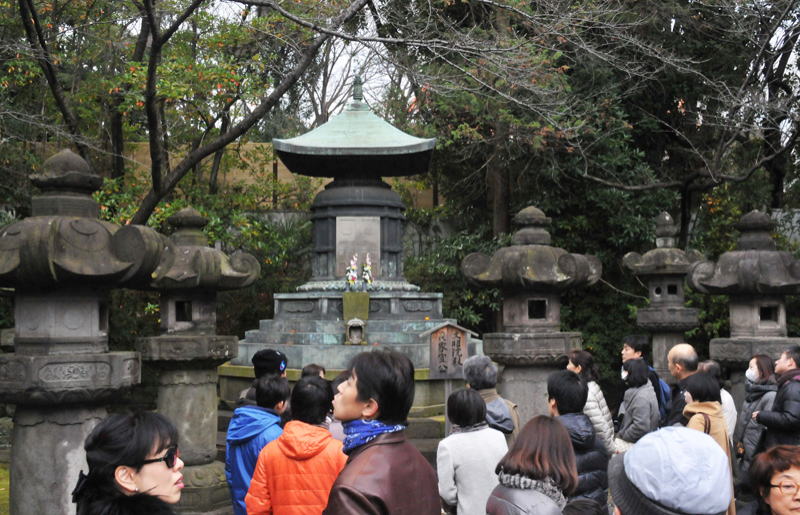
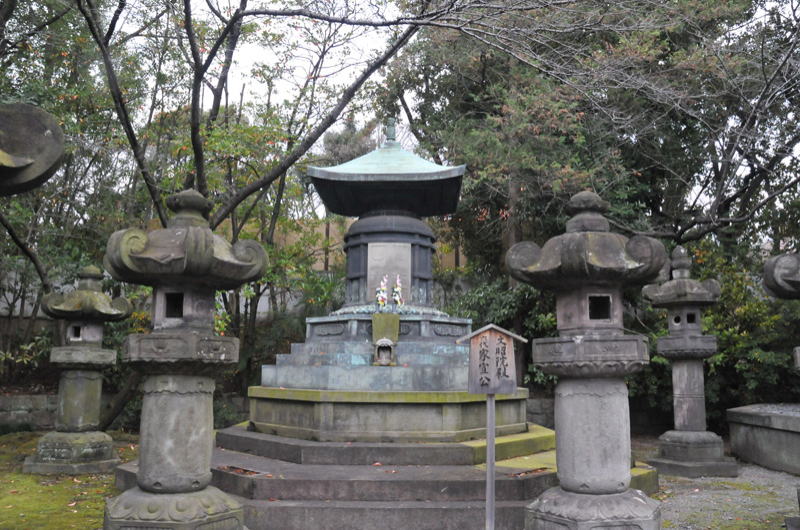
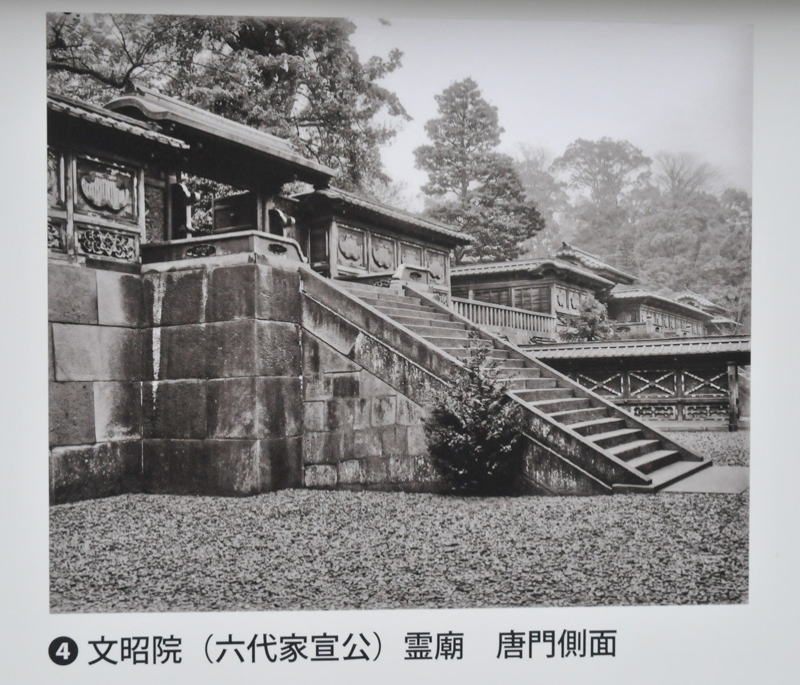
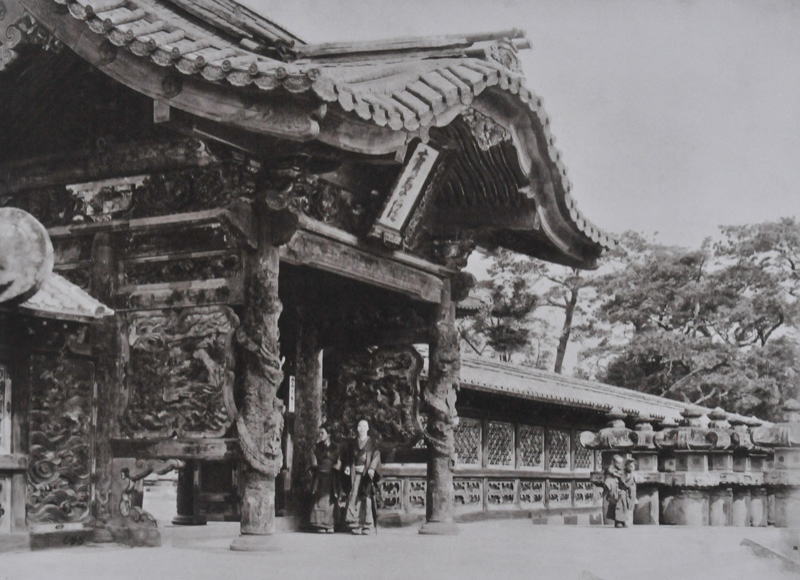
Jizo (Guardian god of children) statues
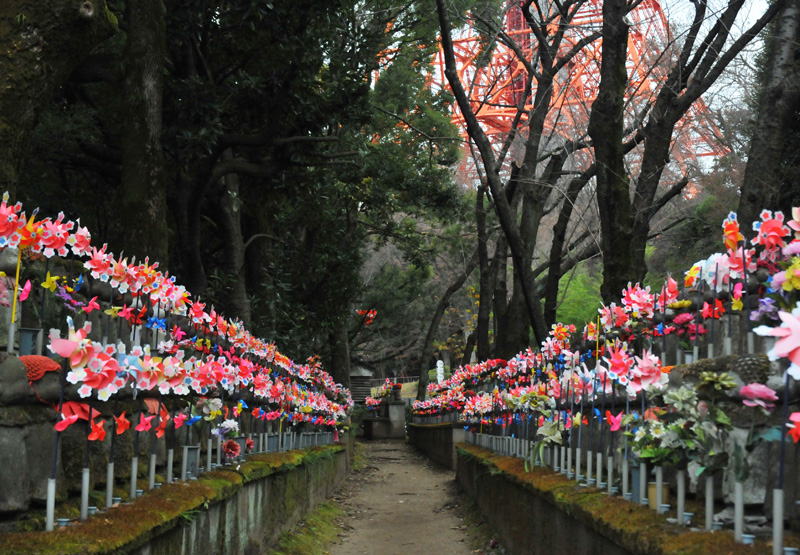
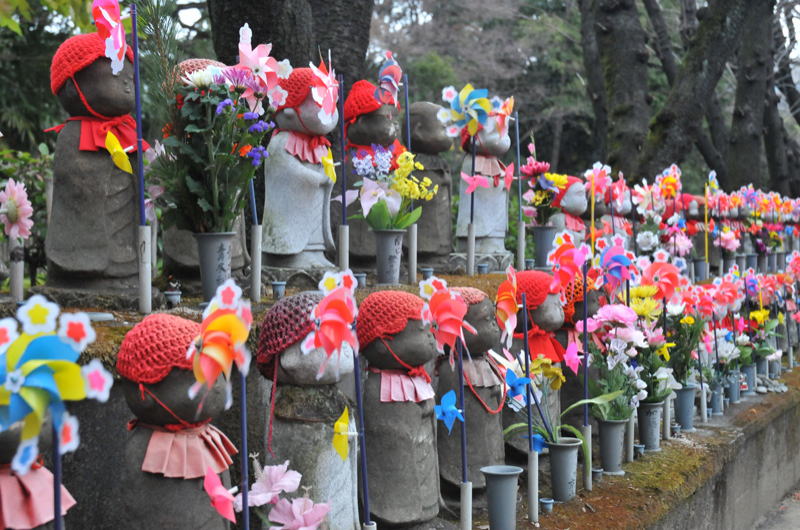
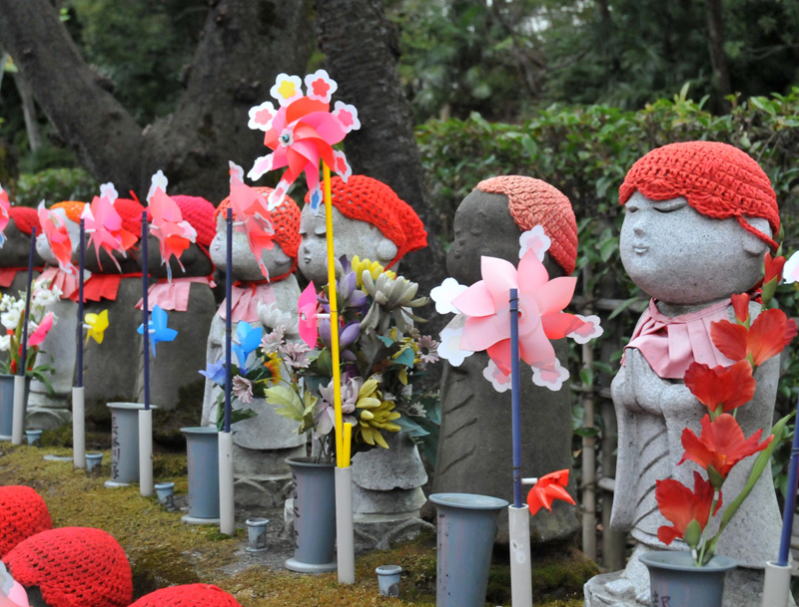
Sarumawashi
(Japan's traditional performing arts of monkeys. The show is seen on Jan.
1,2 and 3)
